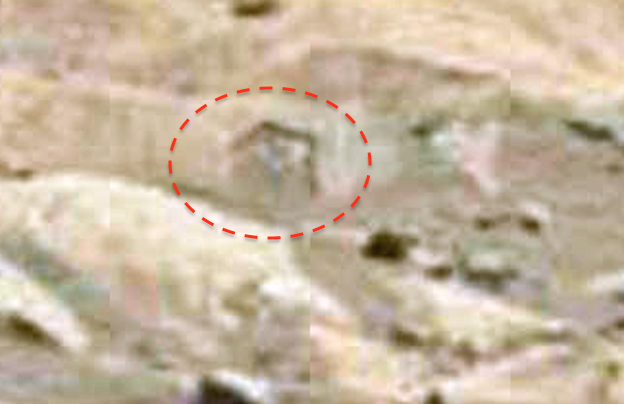

And because Mars is a part of Google Earth, scientists can easily use it for visualization, collaboration, and outreach, by authoring their own KML data layers for Mars. We hope that Mars in Google Earth proves useful to Martians, but we also hope it helps those on Earth appreciate the beauty and science behind Earth's nearest planetary neighbor.

But note that Street View's current face-blurring technology is only calibrated for human faces, so (at least for the time being) we haven't blurred any Martian faces in NASA's imagery. The rover panoramas are displayed in Street View style, allowing you to both pan around and zoom all the way in to see details. Last, but certainly not least, we've made it easy to follow NASA rover tracks and view 360-degree panoramas of the Martian surface, taken by the rovers. They can search for and view many well-known Martian landmarks, like the face on Mars. They also have easy access to visible and infrared global maps, a browsable layer of the most interesting high-resolution satellite images, and excerpts from a travel guide for the planet. Now they can see 3D views of Valles Marineris on Mars, which is 10 times as long and 7 times as wide as Earth's largest canyon. Martian users will definitely appreciate the fact that they're no longer stuck viewing Earth's inadequately-sized geological features. Google's Martian userbase isn't growing very rapidly these days (exact numbers are confidential), but in anticipation of the day that it does: we're pleased to announce that this week's Google Earth 5.0 release includes a new mode dedicated to Mars - and yes, even Earthlings can enjoy it. But for some time now, the Google Earth team has failed to prioritize the obvious needs of a very select but important potential audience: Martians. SPACE.Google Earth has done much to help humans understand their planet, opening the eyes of many to new views of places near and far. Even on Earth, formations such as the "Old Man of the Mountain" in New Hampshire can create aesthetically pleasing imagery without extraterrestrial intervention. Such structures are not particularly indicative of alien life. And other, vaguer faces dot the surface of the red planet. The Mars Express images captured a skull-shaped mesa. A lava flow pattern on the large volcano Alba Patera looks a great deal like the popular Muppet Kermit the Frog. Viking captured several other intriguing images, including the Galle crater in the southern highlands, boasting a curved mountain range and two mountain clusters that create the appearance of a smiley face.

Both the Global Space Surveyor and the Mars Express captured enough data to create a three-dimensional look at the fascinating formation.Īlthough one of the most popular landmarks on Mars, the face is by no means the only group of rocks to lie in a visually pleasing configuration. The results revealed that there was nothing unique about the structural formation of the face itself it resembles its neighboring landforms. Other mesas are scattered across the Cydonia region, and the orbiters have measured them while circling over the area. It likely formed from a combination of landslides and collected debris. The rocky outcropping that creates the illusion is approximately a mile across and bears a resemblance to buttes or mesas from the American West. A close-up view (from above) the Martian Happy Face, Crater Galle, in false-color.


 0 kommentar(er)
0 kommentar(er)
